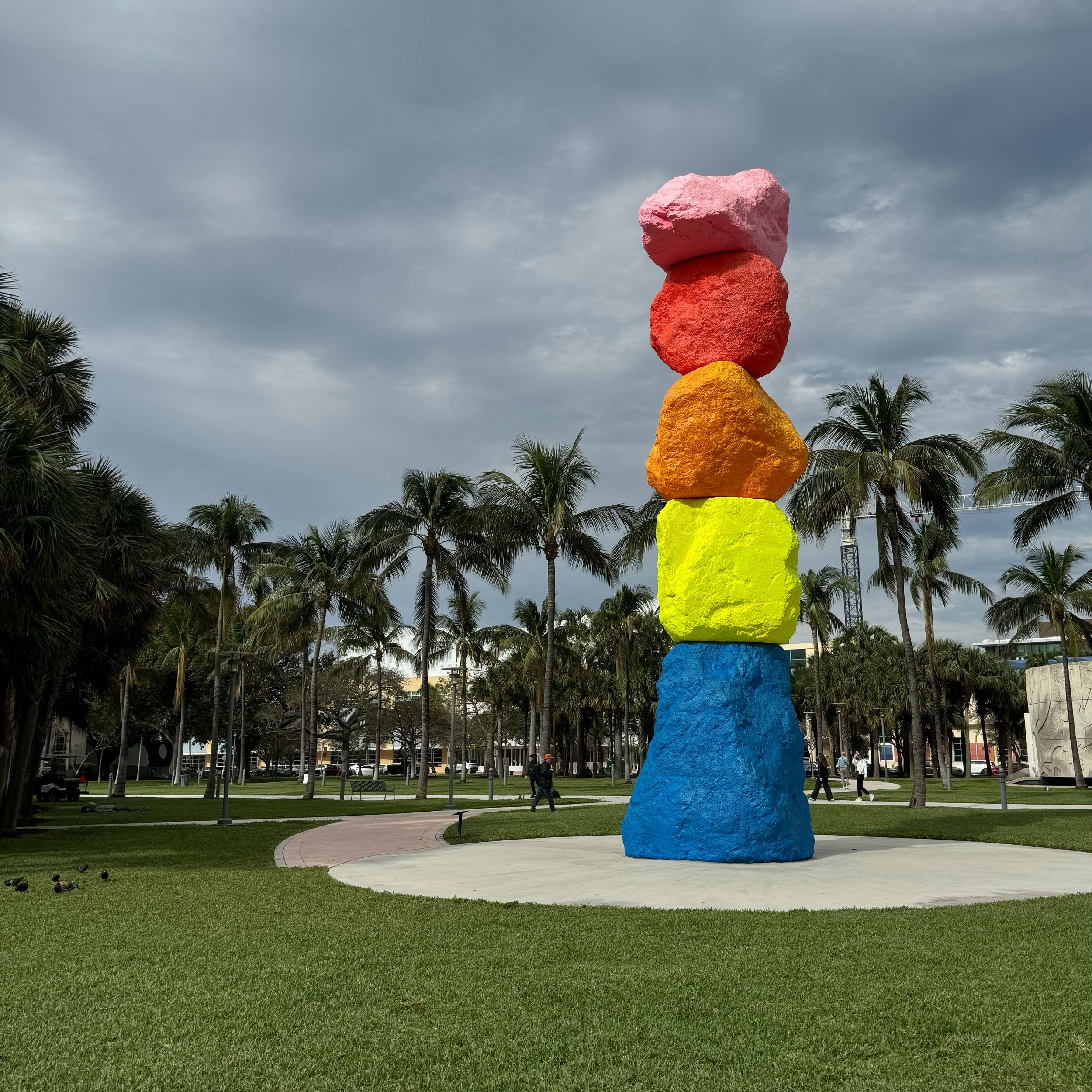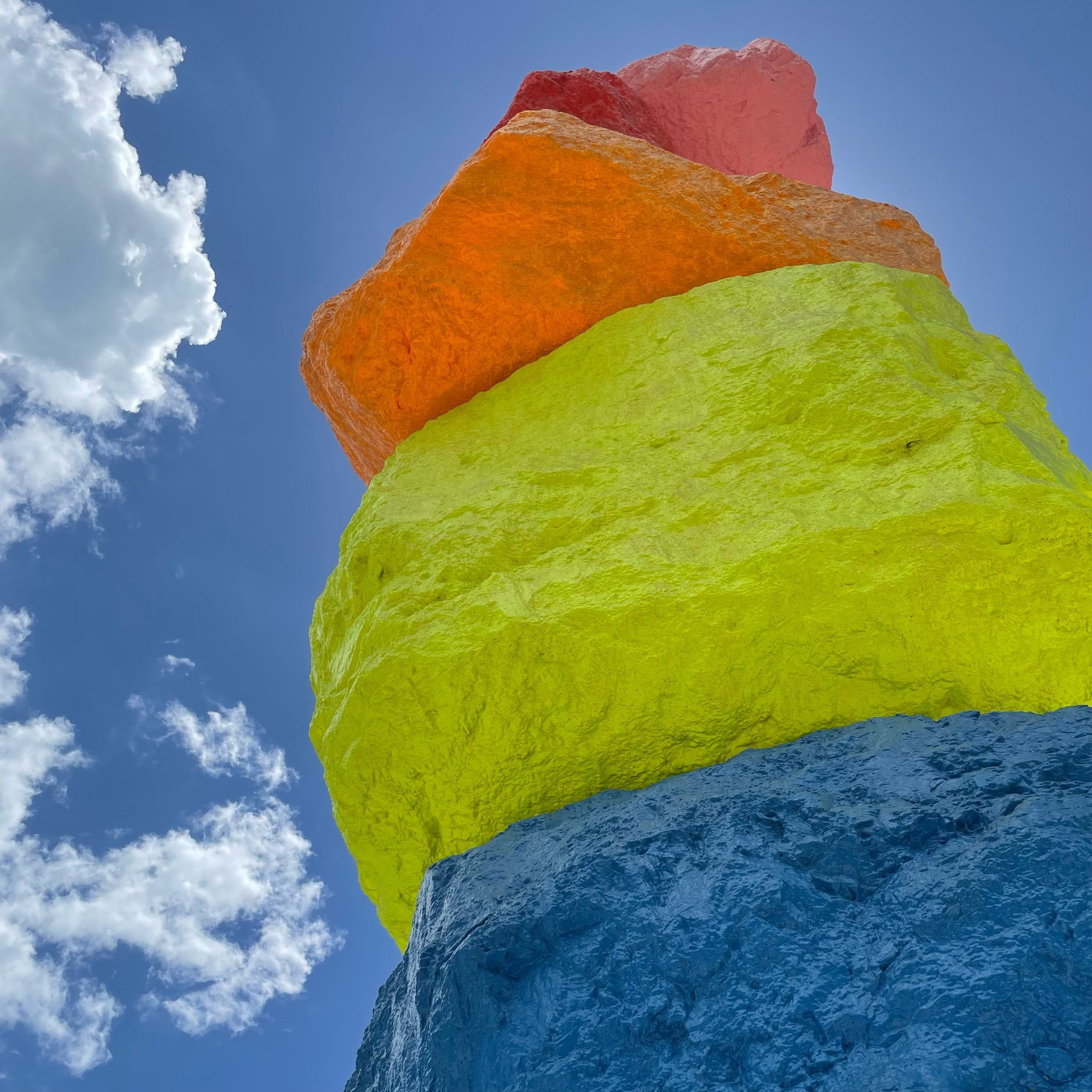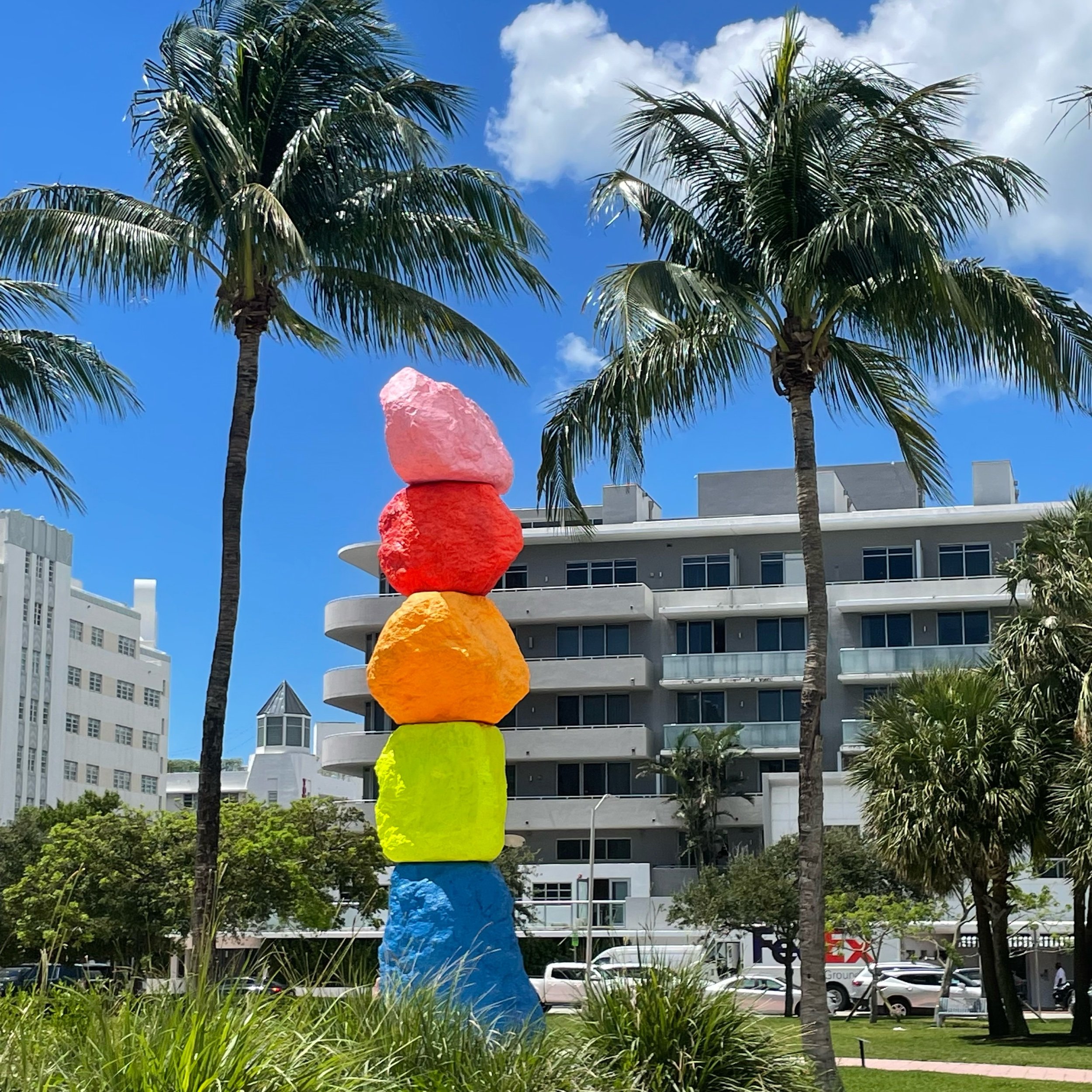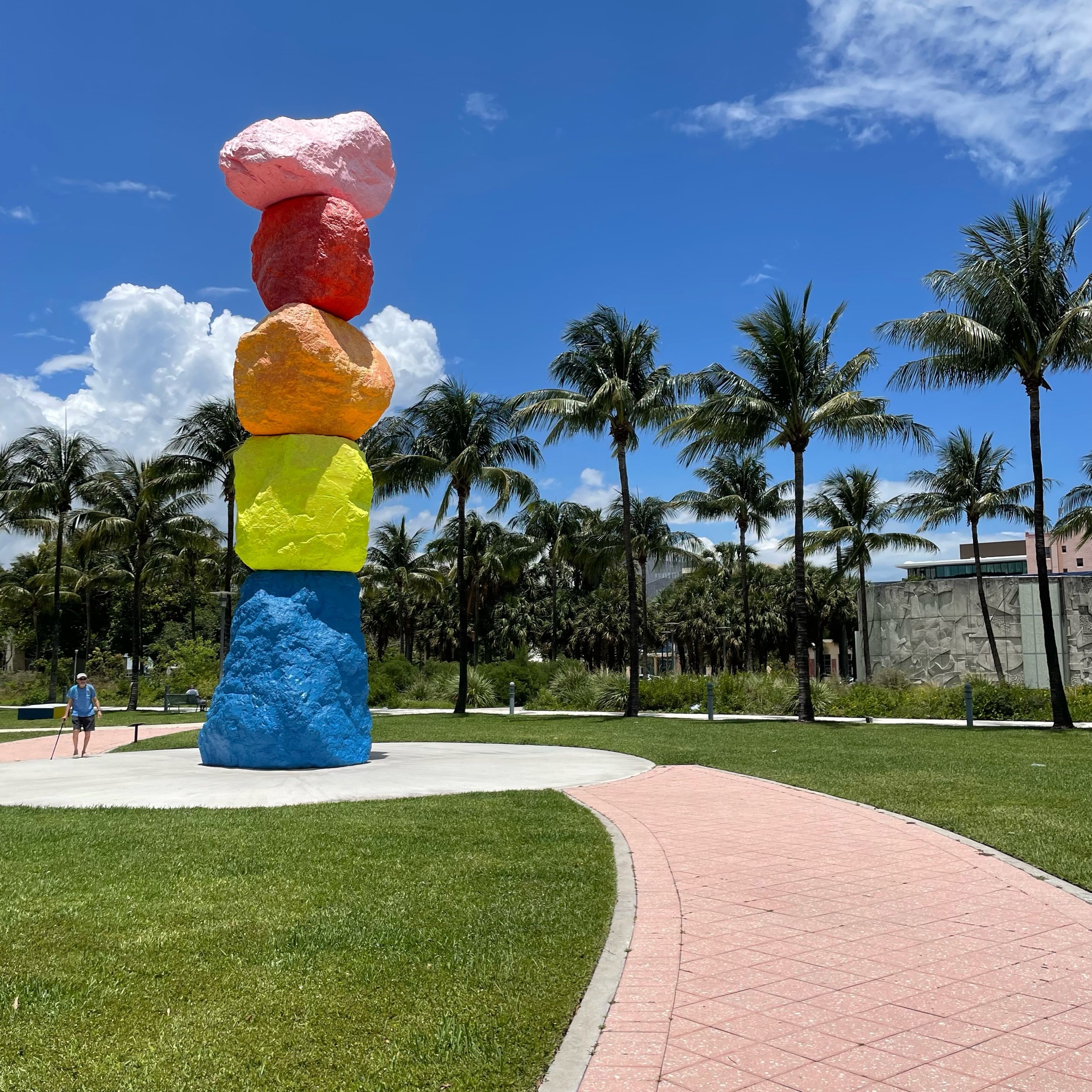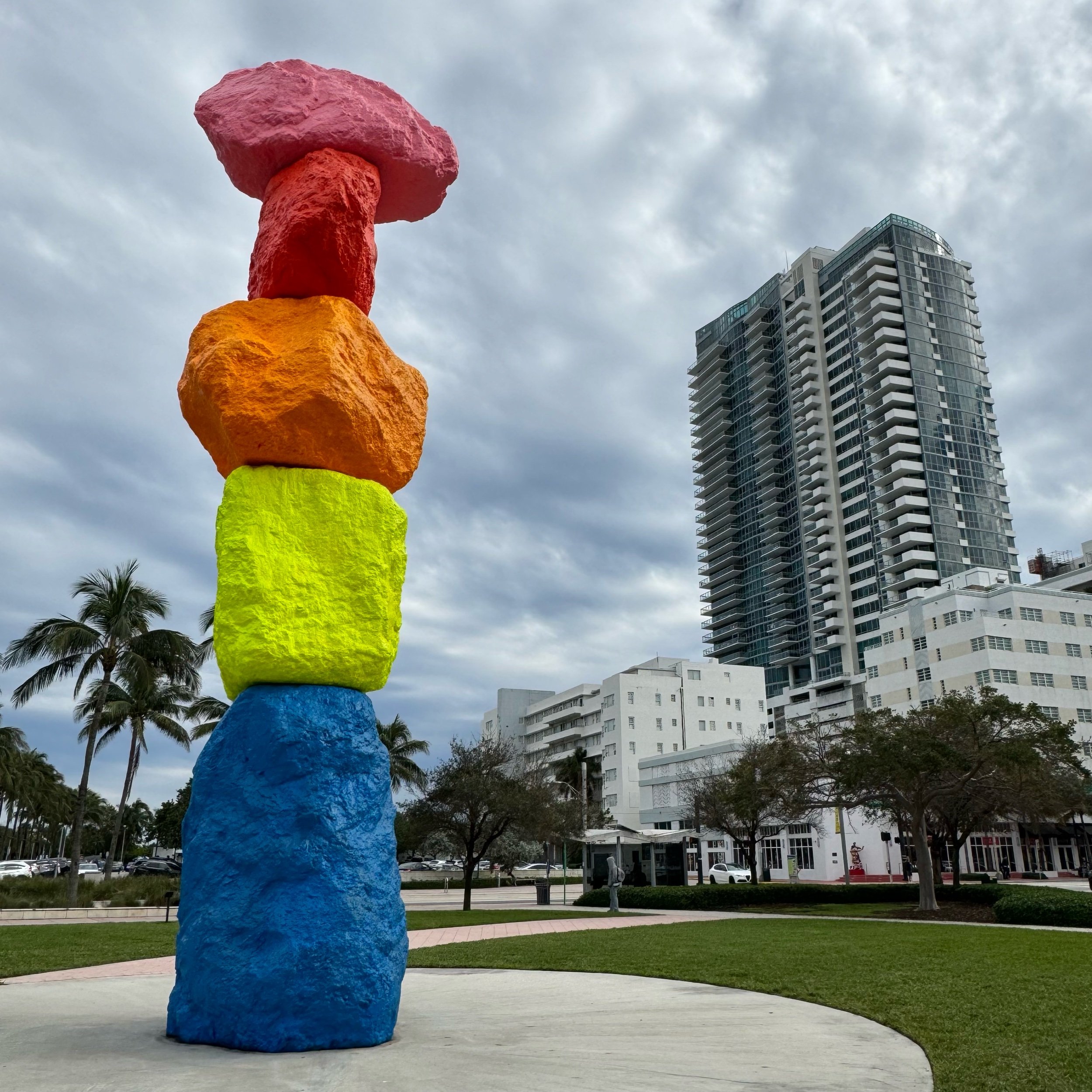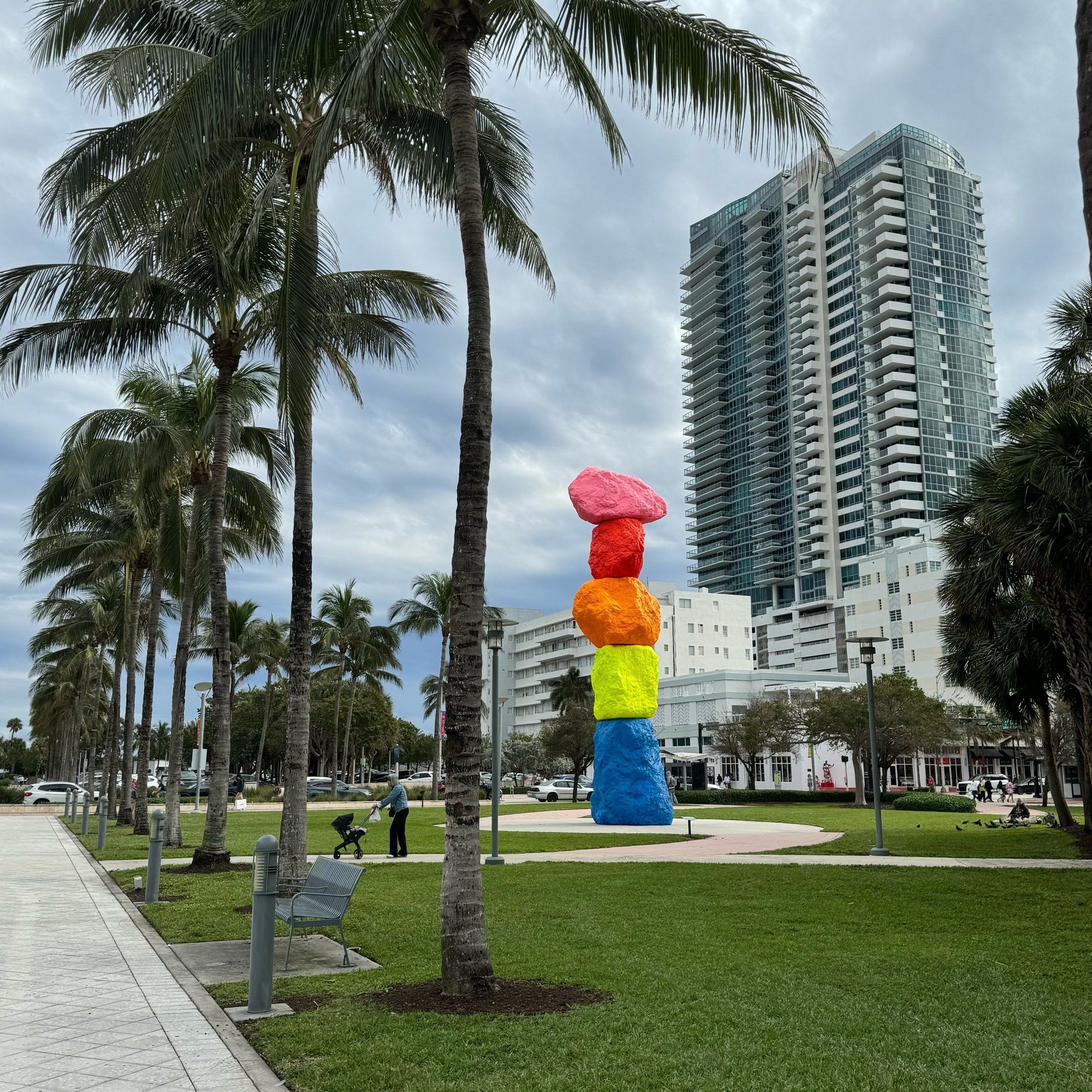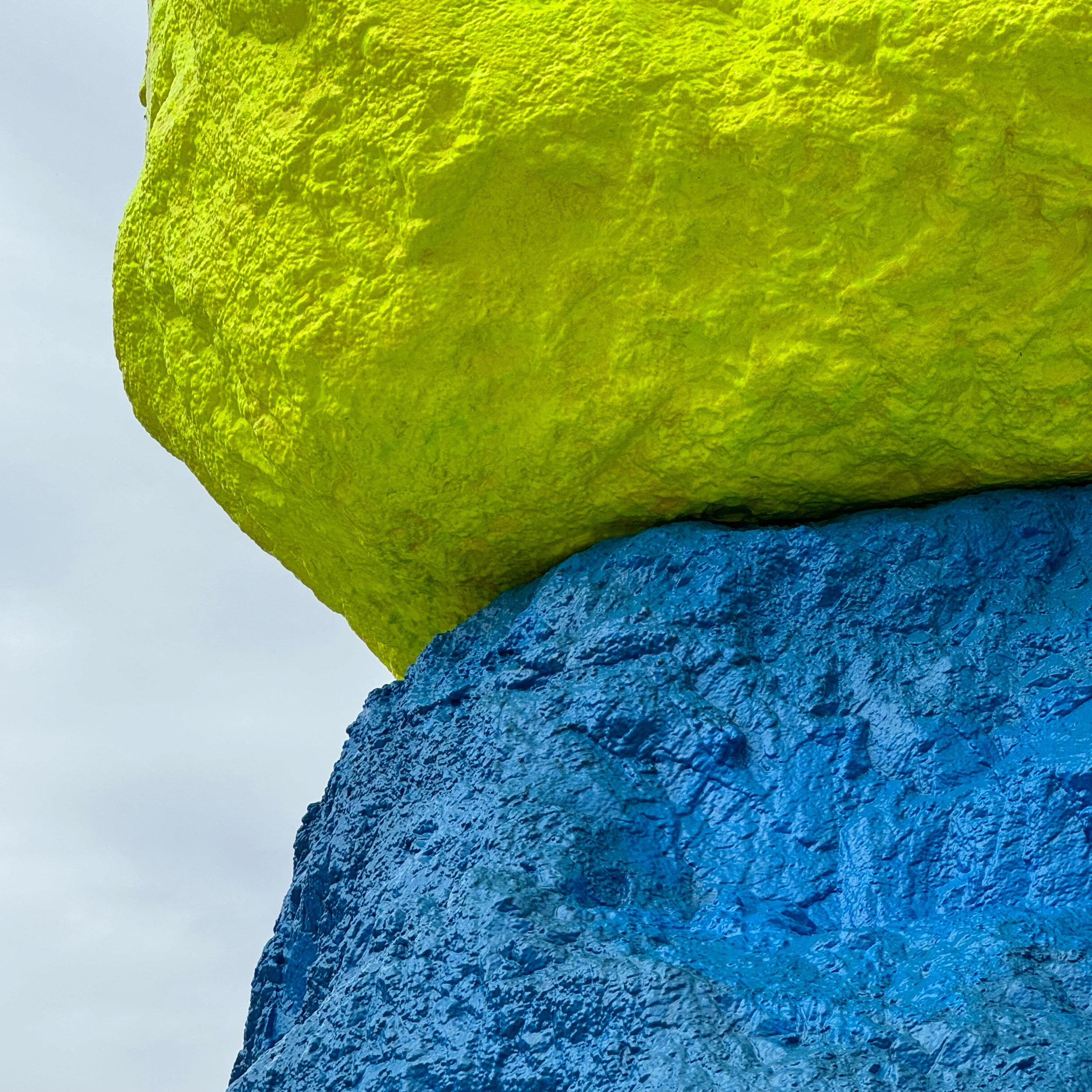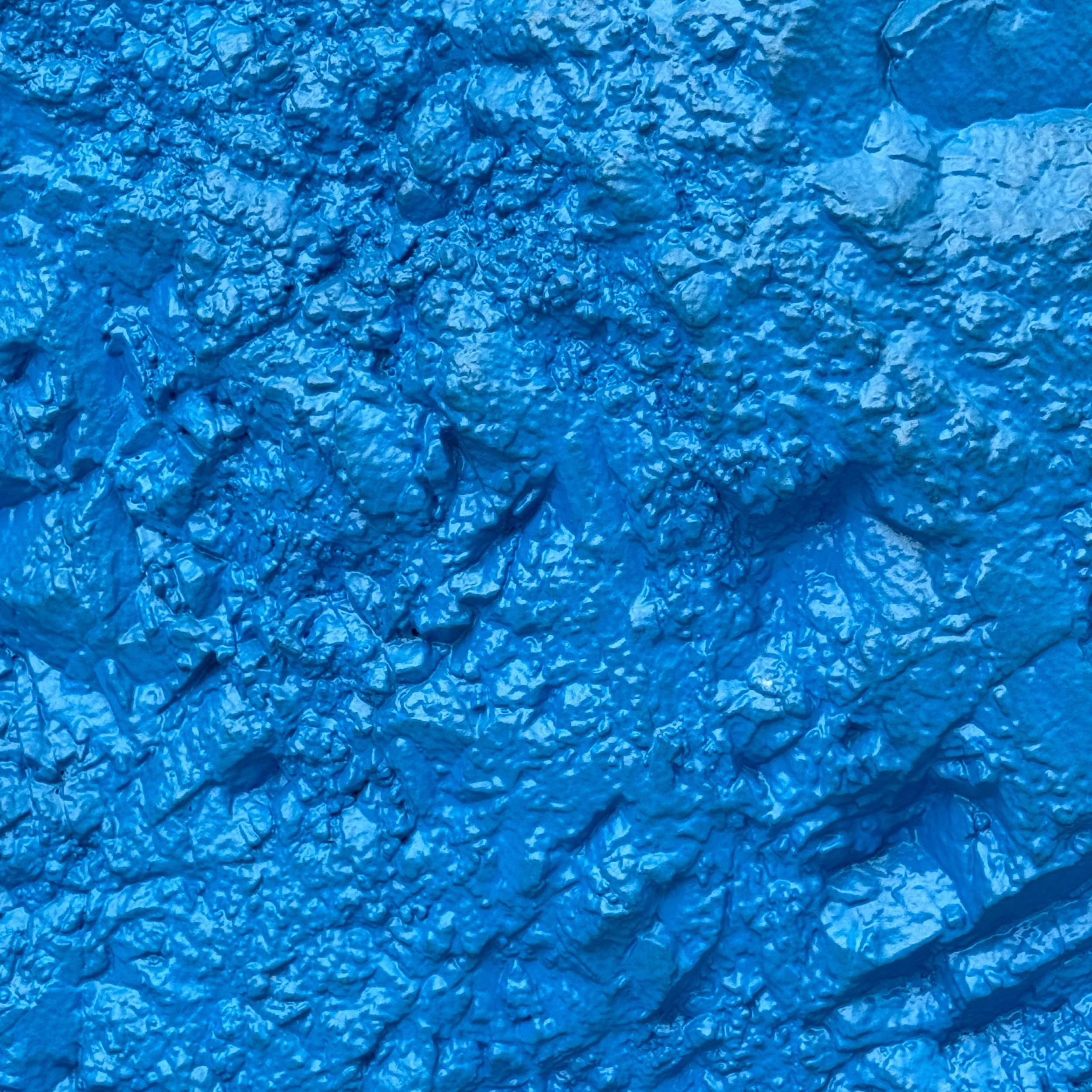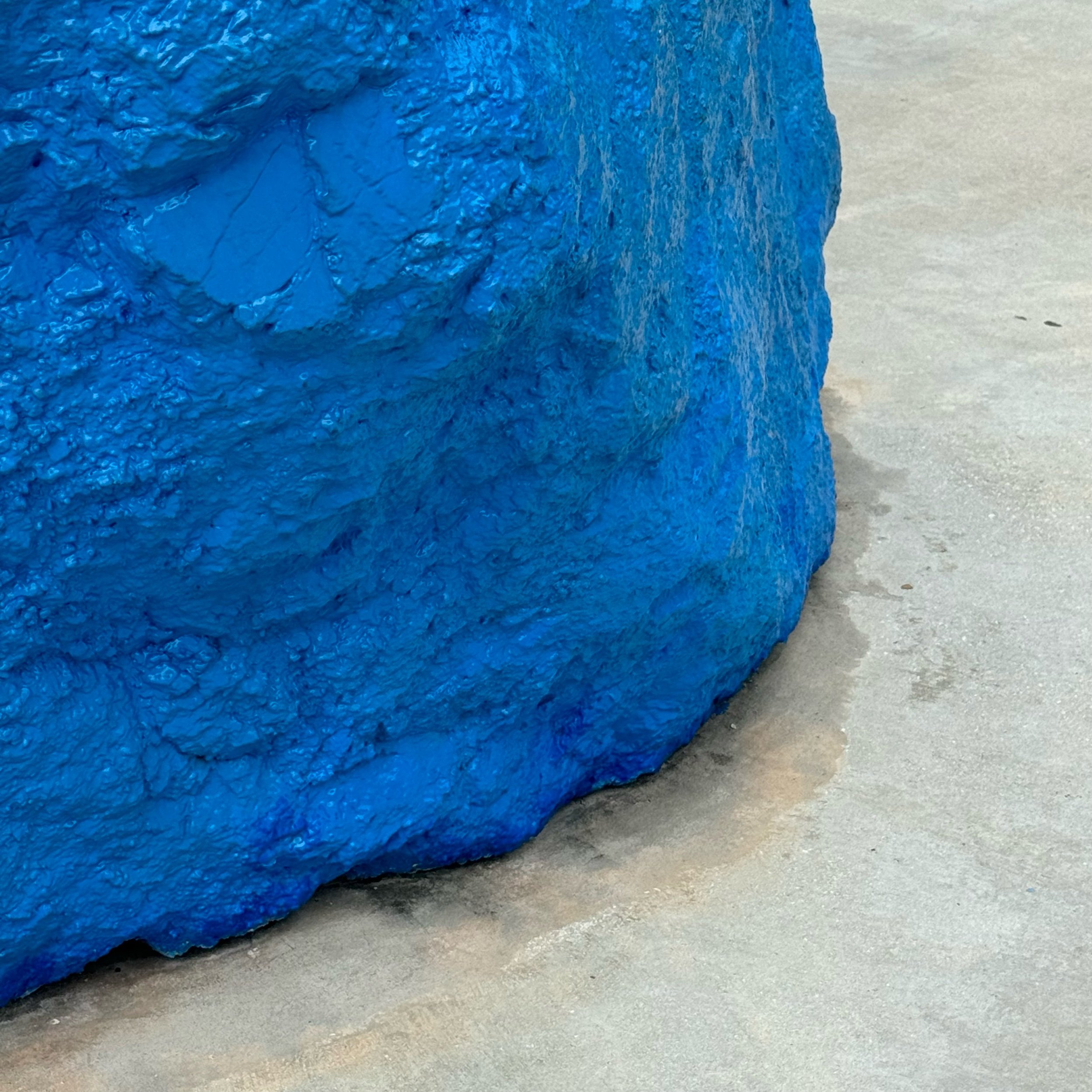Miami Mountain (2016)
Ugo Rondinone (b.1964)
Miami Mountain, 2016
Stone, paint, steel
1250 cm × 190 cm x 240 cm
The Bass Museum of Art, Miami, FL
Miami Beach. It’s a place you gotta see, but for many more people it’s a place to be seen. Flashy cars, sports stars, celebs and monied locals that love to splash the cash. Collins Avenue is the spine that runs through it and right at its midpoint, as it bends into Collins Park, it’s impossible to miss a towering, colourful work of art: Ugo Rondinone’s Miami Mountain.
One of the reasons I like this work is that it carefully averts the many challenges that often haunt public sculptures. It’s genderless, apolitical, agnostic and not so abstract as to be off putting. No one’s going to stand and stare at this thing wondering “What the hell is it?” because it’s pretty evident just exactly what it is. It’s a stack of stones — referred to as a cairn — which humans have been making for millennia to signify burial mounds, wayfinding markers and landmarks. Though at this scale, Miami Mountain owes more to the naturally created balancing rock formations frequently seen in America’s western desert landscapes like Bryce Canyon.
Another reason I like it is the use of primary, day-glo colours. It makes the rocky shapes look like roughly formed blobs of Play-Doh. They pop against a grey sky, and on a bright sunny day they shine with a luminous glow. They’re huge and imposing and the higher they go, the more precarious they look. The top stone cantilevers over the ones below, making you wonder just how strong South Florida’s tropical storms need to be in order to topple the tower. Don’t worry, these rocks are held together better than most of the assets barely contained by the Lycra worn by the youths hanging out at Joe & the Juice located directly across the street.
I found a fantastic video that shows the stones being stacked. It’s been cleverly edited to give the impression that they are indeed balancing freely, one on top of another, using nothing more than gravity to keep them in place. Which wouldn’t be a stretch to imagine, since each of the Nevada limestone boulders weigh between 15 and 30 tons. But a steel core provides safety and stability and, most crucially, has been carefully hidden in order to maintain the illusion. Rondinone clearly knows what he’s doing. Prior to Miami he created Seven Magic Mountains, a series of 35 boulders stacked in the desert outside of Las Vegas. More recently he installed a version in Liverpool, just outside the Tate.
I’ve been to that one too. It’s just as bright but not as tall as the one in Miami. To compare them in human terms, they would look like Olympic gymnast Simone Biles (4’8”) standing next to Taylor Swift (5’11”). Yet despite the rocky formations looking perfectly at home stacked alongside the industrial docks, the bright colours make the work stand out like the alien, contemporary art form that it is. It’s distinctly an outsider to the area, and with abstract art that’s not always a good thing. But in Miami the colours fit perfectly, like they walked straight off the beach, parading alongside the skimpy swimsuits and oiled up muscle men revving their engines on Ocean Drive. That’s one more reason why I like it. It’s a perfectly curated work of art, slipping so naturally into the environment that it’s impossible to imagine the area ever existed without it.
Speaking of the area, Collins Park is located in the middle of what is widely recognised as the cultural centre. The Bass Museum of Art, The Miami City Ballet, The SoBe Music Institute, The Holocaust Memorial, the Miami Design and Preservation League and the CANDO Art's Co-op are all located nearby. Collins Park also frequently transforms into an auxiliary event venue for Art Basel and Design Miami. Centered amongst all of it, Rondinone’s stack of stones is perfectly located as both landmark and wayfinder for the culture vultures of Miami Beach.
That’s why I like it.
Art marks the spot.
Previously, on Why I Like It:
Dec — The London Mastaba (2016-2018), Christo
Nov — The Rose (1958-66), Jay DeFeo
Oct — Acre of Green (2007), Nathan Slate Joseph

